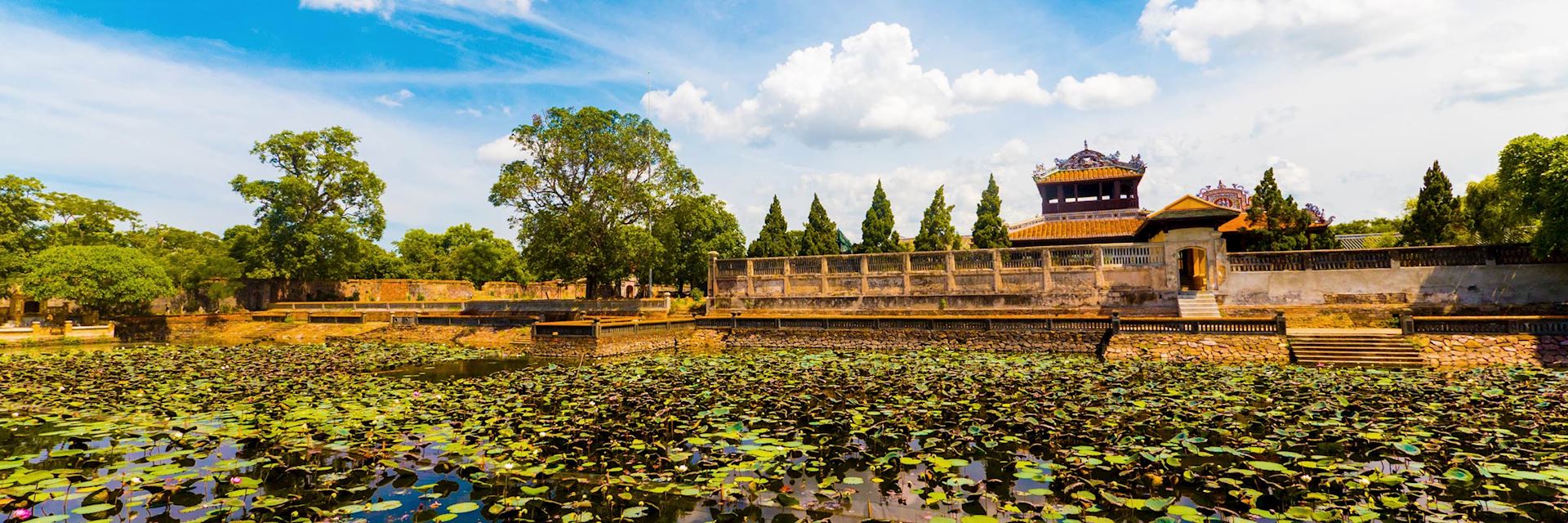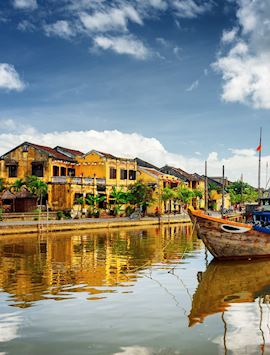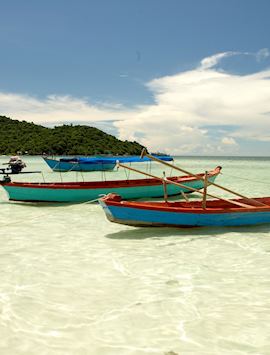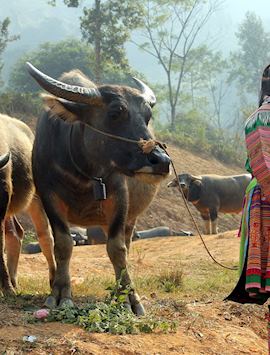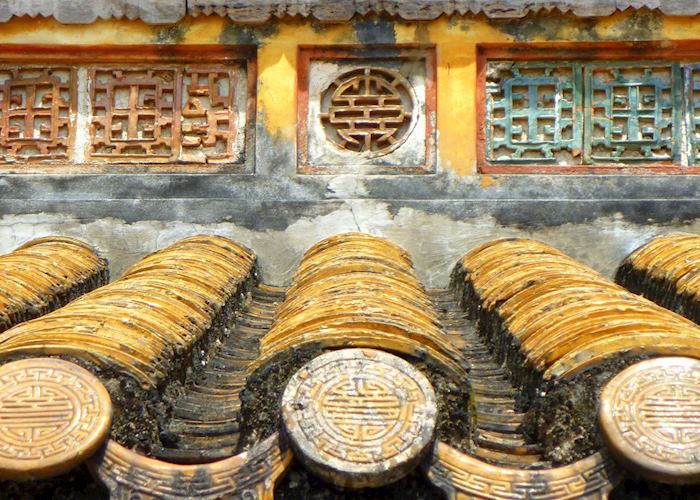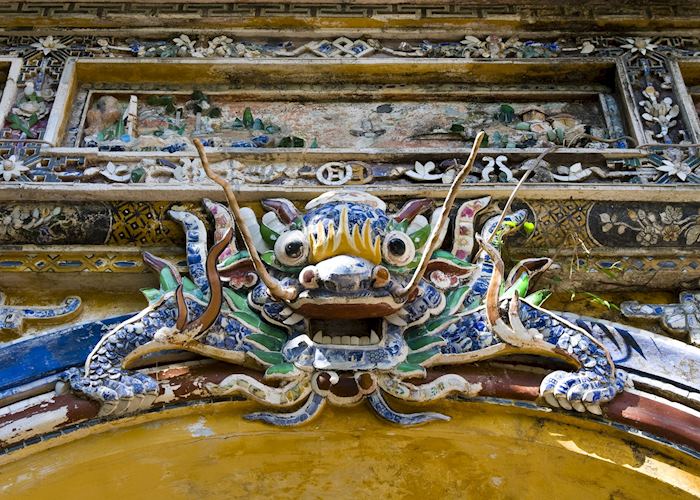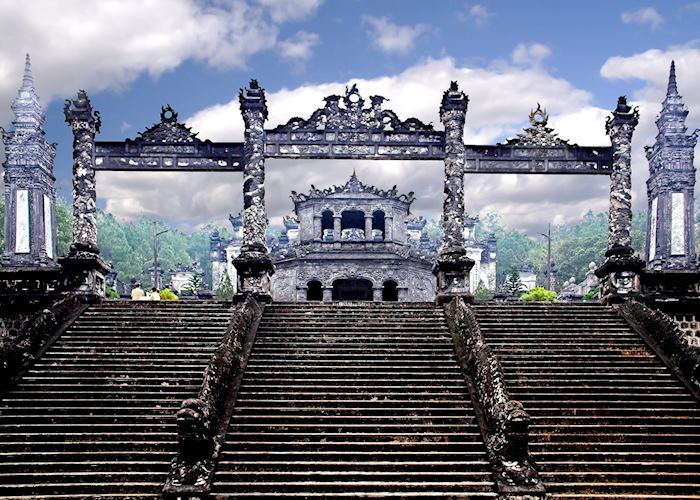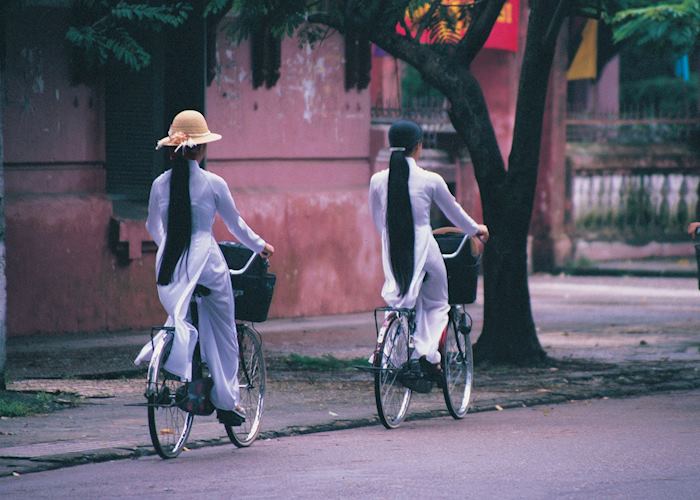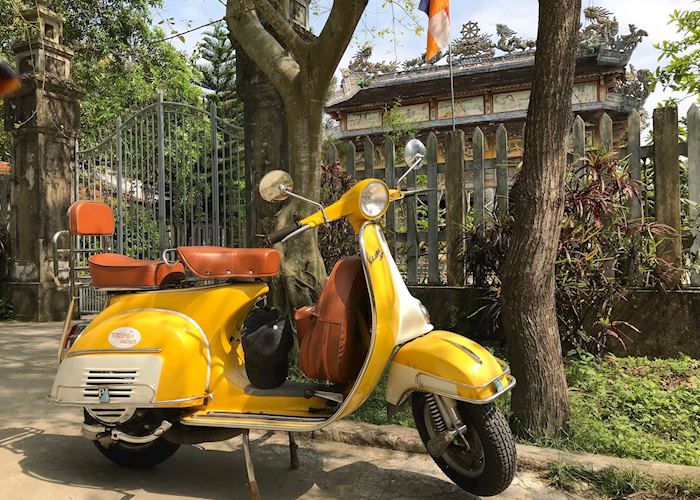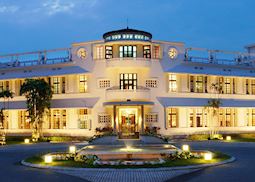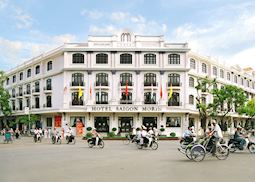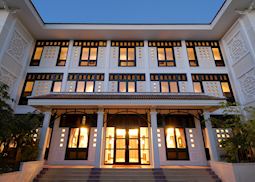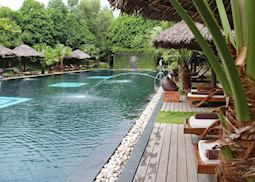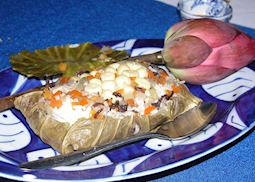Jump to:
As you walk through Hue’s citadel, you can still see pockmarks from helicopter gunfire on the walkways. The city reverberates with its past importance, from its time as Vietnam’s capital under the Nguyen Dynasty in the 19th century to being the focus of the 1968 Tet Offensive. Modern Hue is proud of its historical sites, but you’ll also find it a focal point for the development of Vietnamese art, culture and cuisine.
 Although settled by the Cham people, visited by the Dutch and Portuguese, and colonised by the French, it was the city’s time under Mandarin rule that shaped present-day Hue. The last imperial family, the Nguyens, ruled under French protection from 1802 to 1945, until the Japanese occupation during World War II.
Although settled by the Cham people, visited by the Dutch and Portuguese, and colonised by the French, it was the city’s time under Mandarin rule that shaped present-day Hue. The last imperial family, the Nguyens, ruled under French protection from 1802 to 1945, until the Japanese occupation during World War II.
Their mausoleums stand along the banks of the Perfume River and in the surrounding valleys. Lavishly squandering the country’s wealth and manpower, these tombs were often funded by raising taxes. You can explore them by bicycle, car or boat. Allowing a day, you’ll see a range of architecture from 19th-century emperor Minh Mang’s complex of pavilions and gardens to Khai Dinh’s 20th-century tomb, which made use of new materials like cement.
While most of the citadel was destroyed when Ho Chi Minh’s Viet Minh seized it in 1947, and later during the Tet Offensive, much of it is rebuilt or restored. Walk over the moat and through the fortified ramparts and you’ll find water-lily-covered ponds, palaces, temples and libraries. We recommend visiting with a guide, who can explain how the complex was carefully designed in accordance with ancient oriental philosophy.
Local artists and craftspeople restored much of the citadel. Appreciation is growing in Vietnam for its traditional art, with the support of private collectors and Hue’s UNESCO World Heritage status. You can visit private collections, try your hand at trucchi (bamboo paper art) or become versed on the lacquer paintings that decorate the palace walls.
A good chunk smaller than Ho Chi Minh City or Hanoi, Hue is surrounded by leafy residential areas populated by garden houses. These single-storey homes are unique to Hue and have architectural similarities to the imperial palaces within the citadel.
Many of the houses were built for families who had the patronage of the royal family. At the entrance, you’ll find a stone carving of the ancient Vietnamese symbol for longevity and, inside, a wooden ancestral family temple.
As the name suggests, each house is surrounded by a garden. Pineapples, jackfruit, pomelos and herbs usually grow in these frangipani-shaded enclaves. You can take a cooking class in a garden house, using freshly picked ingredients from the plot. Hue lays claim to some of Vietnam’s spiciest food (although recipes can be tempered for a Western palate) and specialties including fresh fig salad.
Almost two-thirds of Vietnam’s culinary specialities were created in Hue, thanks to the region’s plethora of fresh ingredients and the royal family’s taste for gastronomic innovation. As you explore the city look out for banh khoai (bright yellow rice pancakes) or banh loc goi, a steamed dumpling usually stuffed with shrimp or pork.
Vinh Moc Tunnels
A couple of hours’ drive north of Hue, these tunnels on the border between North and South Vietnam were built to shelter Vinh Moc village from heavy bombing during the Vietnam War.
The entire village was moved underground, into three levels of tunnels. Reaching a depth of 30 m (98 ft), they included kitchens, a school and living quarters. Visit with a guide, who can take you into the tunnel network, which, unlike the Cu Chi Tunnels, hasn’t been widened for visitors.
Best time to visit Hue
Hue only really has two seasons: wet and dry. The dry season runs from February to August, with the best weather early on, when temperatures hover around 25°C (77°F).
From June, temperatures tend to soar, and the region becomes busy with domestic tourists and tour groups.
The wet season begins in September, although this can be a good-value (and quieter) month to travel, if you’re happy with a few showers. The heaviest rains are in October and November.
who's been there
-
01993 838 92501993 838 140
- Make an enquiry
Suggested itineraries featuring Hue
Our itineraries will give you suggestions for what is possible when you travel in Hue, and they showcase routes we know work particularly well. Treat them as inspiration, because your trip will be created uniquely by one of our specialists.
Places near Hue
- Bach Ma National Park 27 miles away
- Lang Co 37 miles away
- Bho Hoong 39 miles away
- Hoi An 65 miles away
- Phong Nha-Ke Bang National Park 123 miles away
- Kon Tum 150 miles away
- Quy Nhon 218 miles away
- Buon Ma Thuot 265 miles away
- Central Highlands 266 miles away
- Ninh Binh 282 miles away
Photos of Hue
Our expert guides to exploring Hue
Written by our specialists from their own experiences of visiting Hue, these guides will help you make the most of your time there. We share both our practical recommendations and the best ways to appreciate Hue at its best.
-
Vietnam’s imperial city: our highlights of Hue ![Thien Mu Pagoda, Hue]()
Vietnam’s imperial city: our highlights of Hue
Vietnam’s imperial city: our highlights of Hue
Indochina specialist Georgina shares her suggestions for how to experience Vietnam’s regal city, Hue. Where to sample the freshest spring rolls, how to get hands-on in one of the many art studios, and which historical sites to visit to unearth Hue’s place in Vietnam’s imperialism and modern wars.
Read this guide
Accommodation choices for Hue
We’ve selected a range of accommodation options for when you visit Hue. Our choices usually come recommended for their character, facilities and service or location. Our specialists always aim to suggest properties that match your preferences.
-
![La Residence Hotel & Spa, Hue]()
-
![Saigon Morin Hotel, Hue]()
Saigon Morin
Hue -
![Villa Hue, Hue]()
Villa Hue
Hue -
![Pilgrimage Village Hotel, Hue]()
Ideas for experiencing Hue
Our specialists seek out authentic ways to get to know the places that could feature in your trip. These activities reflect some of the experiences they've most enjoyed while visiting Hue, and which use the best local guides.
-
Perfume River Journey ![Working on the Perfume River]()
Perfume River Journey
Perfume River Journey
During a two-hour journey upriver you can first explore Thien Mu Pagoda, a serene and picturesque landmark which is also an important Buddhist site.
View details -
Citadel Visit ![The Citadel in Hue]()
Citadel Visit
Citadel Visit
Crossing to the north bank of the Perfume River, you will enter the imposing moated Citadel, built by Emperor Gia Long in 1804.
View details -
Y Thao Garden Restaurant cookery course ![Y Thao Garden Restaurant, Hue]()
Y Thao Garden Restaurant cookery course
Y Thao Garden Restaurant cookery course
Located near the ancient citadel in a peaceful suburb of Hue, the Y Thao cooking school is a truly unique way to learn more about Vietnamese cuisine and, of course, lend a hand in creating a culinary masterpiece.
View details

